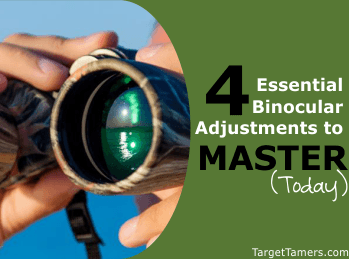
Sometimes a decent pair of binoculars gets a bad rep because too many so-called hunters don't know how to make the most of them... and this could be you too.
Save yourself a little money, a little stress, and a lot of time by knowing how to maximize your binocular use with the essential bino adjustments.
To get the maximum use out of your hunting optic, you need to take into account four essential adjustments - eyecups, hinge systems, center focus wheels, and adjustable eyepieces or diopter.
If this is the first time you've ever considered really getting the most use out of your binoculars, then you're about to see how great your sights can really be.
4 Essential Binocular Adjustments
1. Adjusting Eyecups: Become an Eyecup Master
Eyecups are used for two reasons: to provide comfort around the eyes and brows and to enable both glasses-wearers and non-glasses wearers to reach the ideal amount of eye relief.
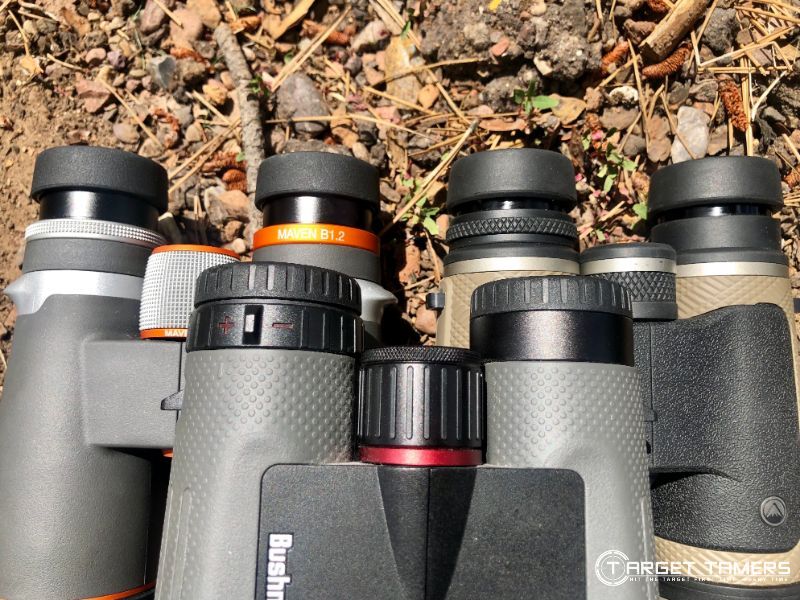
Types of Eyecups
Eyecups are an attachment on the eyepiece of the binocular, and there are only a few different types such as the fold up/down, the adjustable twist up/down, and the wrap around.
All modern day eyecups are made with plastic, unless the manufacturer has built quality metal ones. They will all be covered with some sort of rubber to help make them last and to make it more comfortable against the skin, eyes, and brows.
TIP
Glasses-wearers want to look for a minimum of 16 mm of eye relief on a binocular. Although there will be some exceptions to this rule, having around 16-18 mm should be enough for most glasses-wearers to see the entire field of view.
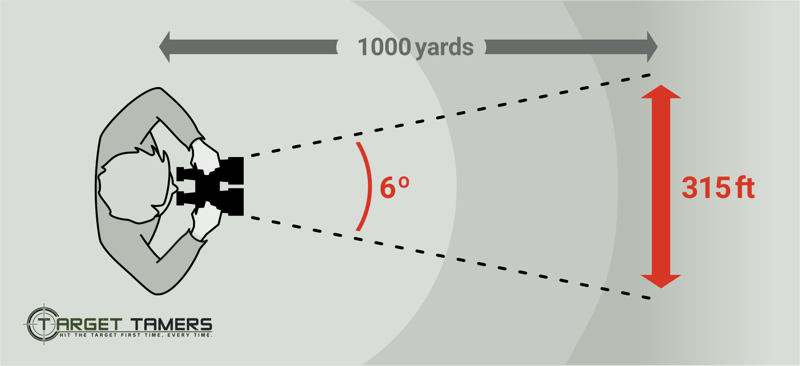
How to Use Fold Style Eyecups
These types of eyecups are being phased out for the more modern and adjustable twist up/down ones. But, there are still some hunters that prefer the old school folding method. Here's a quick how-to to get you started on using fold style eyecups.
If you wear glasses:
- Simply fold down the eyecups.
- This will mean keeping the eyecups as close to the ocular lens as possible.
- Depending on the amount of eye relief the binocular has, you should be able to view the entire field of view with your glasses right up against the ocular lens.
If you don't wear glasses:
- Simply fold the eyecups up.
- This will mean keeping the eyecups protruded from the ocular lens.
- Here, you should be within the ideal amount of eye relief to view the entire field of view comfortably and without image aberration.
TIP
Fold style eyecups are more commonly seen on entry level or low budget binoculars.
How to Use Twist Style Eyecups
These are becoming very popular among bino users, and it's because, most of the time, they're adjustable every part of the way or at least with multiple-position settings.
Twist style eyecups are very easy to use, and you shouldn't have to press your eyes too far into them to get the appropriate amount of eye relief.
Here's a how-to to use adjustable twist eyecups whether you wear glasses or not:
- Simply rotate the eyecup in the direction to bring them out and away from the ocular lens. Typically this is going to be counter-clockwise.
- On multi-position eyecups, it might make an audible sound as it only allows you stop at certain points while bringing the eyecup out.
- This can be mid-level and then fully extended.
- If it's a fully adjustable eyecup, you can stop anywhere while twisting out the eyecup until you've reached the level you like.
- Sometimes there may be a locking mechanism to keep the eyecups in place.
- Be aware: If you don't wear glasses, pressing too hard into the eyecups might adjust them and you may lose focus.
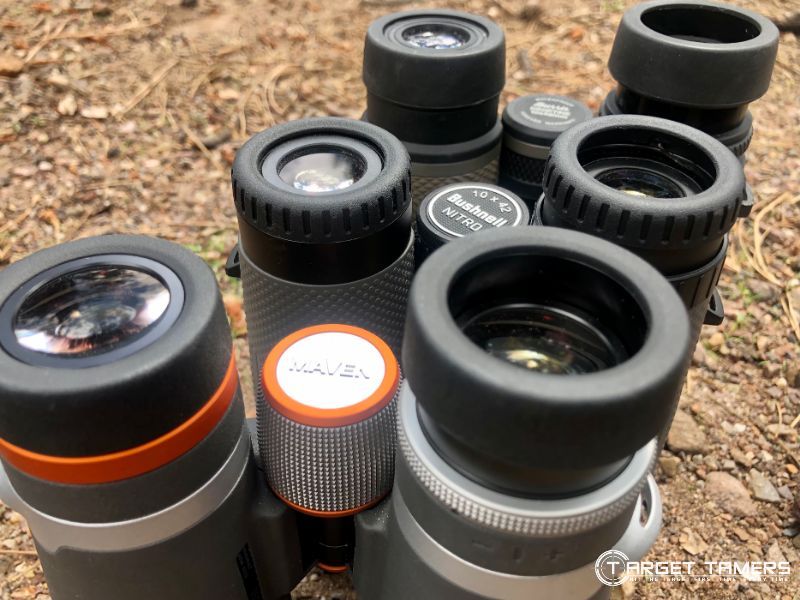
How to Use Wrap Style Eyecups
There are other names for this style of eyecups such as horn, wrap around, and winged. I don't think the wrap around eyecups really need any explaining, except for the fact that glasses-wearers will want to steer clear of them.
Wrap around eyecups have a sort of winged and contoured design that hugs your eye sockets. This is impractical for glasses-wearers since they will get in the way of attaining that suction-like fit. These types of eyecups are only good for the naked eye.
Hunters that are often in bright, windy, or rainy conditions might appreciate wrap around eyecups because it helps to keep your eyes sheltered. Wrap around eyecups will also help to improve focus on your image since you won't be distracted by what's in your peripheral vision.
TIP
Binoculars aren't very practical to share because every person will need to adjust the eyecups to the level that's comfortable to them while still being able to see the entire field of view.
2. Don't be Unhinged by the Hinge
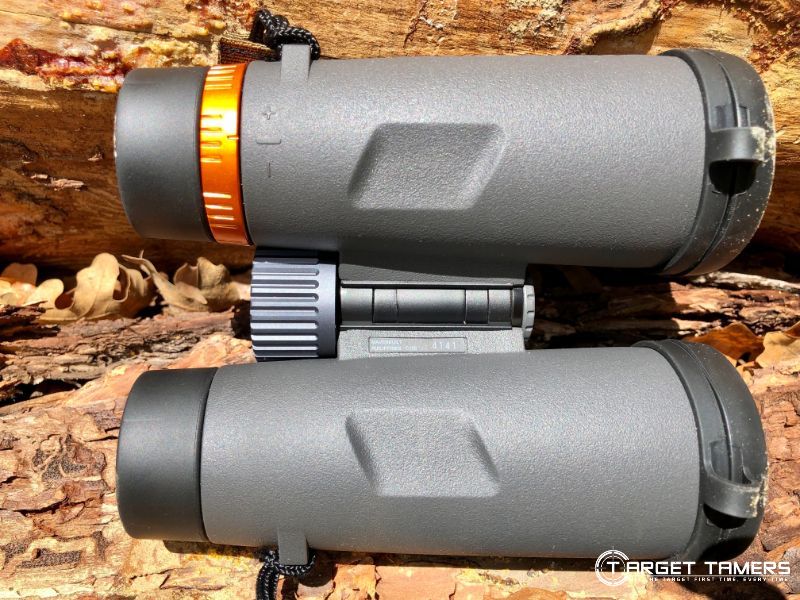
As you start shopping around for binoculars, you'll notice different design styles of how the binocular has been put together, and one of the most common adjustment factors is the hinge style: single hinge or double hinge.
The single hinge design is where there is one hinge in the middle of the bridge of the binocular (the space between the two barrels) that allows the two barrels to move in and out.
The double hinge design is where there is a hinge on each side of the barrel that connects to the bridge.
While manufacturers play around with developing and improving the two hinge systems and marketing teams take a spin at exaggerating the purported claims of "this" hinge over "that" hinge, you might wonder what importance does the hinge system really have at all?
What's the Hinge For?
If you thought it was just for getting a binocular to fold up and become more compact in size to conveniently stow anywhere on your person, you'd be half right.
The biggest reason is to adjust for IPD.
Whoa, do you need me to back up there and explain what IPD is? It stands for Interpupillary Distance. This is the distance from one pupil to the other, and this distance is going to be different for every person.
Adjusting for IPD with the Hinge
Here's a how-to in using the hinge system to properly adjust for IPD.
- Extend the barrels outwards to its widest IPD distance.
- This can be as wide as 76-80 mm.
- Start bringing them inwards until the barrels are aligned with your eye sockets.
- At this point when you look through the binoculars, there will be two circles.
- Keep bringing in the barrels closer together until the circles are perfectly merged as one complete circle.
- If you overshoot and the barrels are too close together, you'll see shadows, crescent shapes, and random aberrations in your view.
- If this happens, extend wider and start again.
- Adjust as necessary throughout the hunt.
Don't Forget IPD!
Surprisingly, this is one of those things that hunters forget to do when they get a brand new pair of binos - properly adjust for IPD. I'm sure many a good binocular has been returned because it was "received" as "faulty". Don't be one of those guys.
3. Find Your Center and Focus
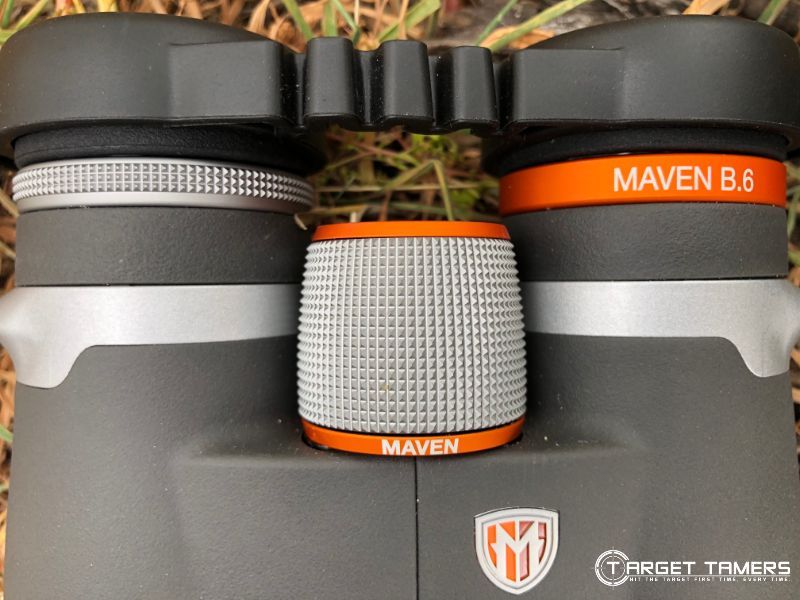
In this specific article, I will address center focus basics. If you want to know more about the other types of focus systems available, check out our How to Focus Your Binoculars article. But first...
What is the Center Focus?
The center focus of your binocular is the wheel or knob that's placed right there in the center of the bridge, right in between the two eyepieces and barrels.
It's pretty self-explanatory to use - just place your index finger on it and run it over its knurly and serrated edges to turn it. This focuses the binocular for your eyes while you're on target.
Make the Most of Your Center Focus
We have a different article that gets into the specifics of properly focusing your center focus system, so I won't get into it here. But, I will throw you a bone or two on how to make the most of using a center focus system.
- Use the center focus knob any time you need to when looking at a new target.
- Use the center focus knob to get a sharp image for targets that are various distances away.
- This may mean you need to refocus for a bird that landed 10 feet away from you or for the mule deer grazing 150 feet away.
- If you zoom and change focus frequently for a wide range of distances, you might benefit from a fast focus system.
- Fast focus systems can get you focused from close to long distance with just a slight turn of the center wheel versus longer revolutions on a conventional center wheel.
TIP
Once you've reached this point of focusing your binocular, you've already made the IPD adjustments and may have already or are yet to make the eyecup adjustments too. Sharing your bino at this point will have you starting these adjustments all over again. Just remember that the next time your hunting buddy wants a quick peek with yours.
Even if you've mastered the center focus system, there's still one more thing to consider. There is one more adjustment that you'll need to get the hang of before your binocular can provide you with the crispest, sharpest images yet - the adjustable eyepiece.
4. Using the Adjustable Eyepiece (Diopter)
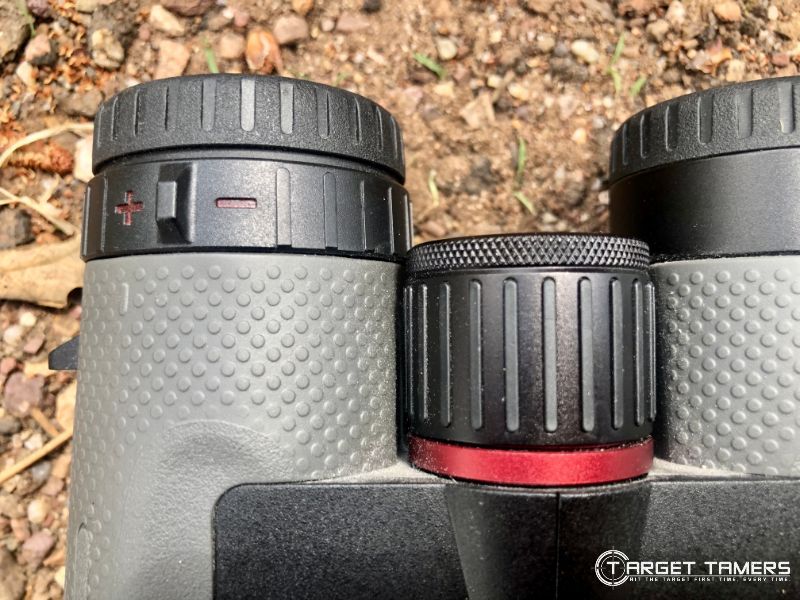
The adjustable eyepiece is also known as the diopter. It's usually located on the right side of the binocular. It should have some sort of scale marked on the underside: "-0+" with another marking so that you can easily reference it.
Some binos might even have their diopter discretely hidden under the center focus knob, and to use it, you simply pull it out for it to function in that manner.
But, what is the diopter for? This might be a hard question to answer if you're solely dependent on the optics manufacturer to define it for you.
Most people, bird watchers, and hunters don't realize that eye strength is usually different for each eye. Your left eye may see better, sharper, and clearer than your right. And, when you're trying to properly calibrate your binocular, this is important to be aware of.
So, how do you adjust a binocular to eliminate the effects of varying eye strengths for each eye? How do you adjust your binoculars for both your left and right eye?
Enter here - the adjustable eyepiece or the diopter.
Making Diopter Adjustments
The detailed instructions for this are also included in the above-mentioned How to Focus & Calibrate Binoculars. So, to save you from painful repetition, I'll just give you the essence of this adjustment in one sentence:
"Use the focus knob to adjust for the left eye, and use the diopter to focus for the right eye."
The whole purpose of the diopter and the center focus is to enable you to get the best picture quality possible for you.
This brings us into a common, running theme I've had going throughout this article. Did you pick up on it?
Avoid Sharing Your Optics
The adjustments that you need to make are often why it's not very practical to share optics. Not only are you needing to adjust the bino for after your friend used it, you're also making adjustments throughout the hunt for yourself if you're ensuring that you've always got the sharpest and clearest images.
All the fiddling around between yourself and others might just be enough to call it a day... all the precious time lost fidgeting around instead of glassing, shooting, and tagging.
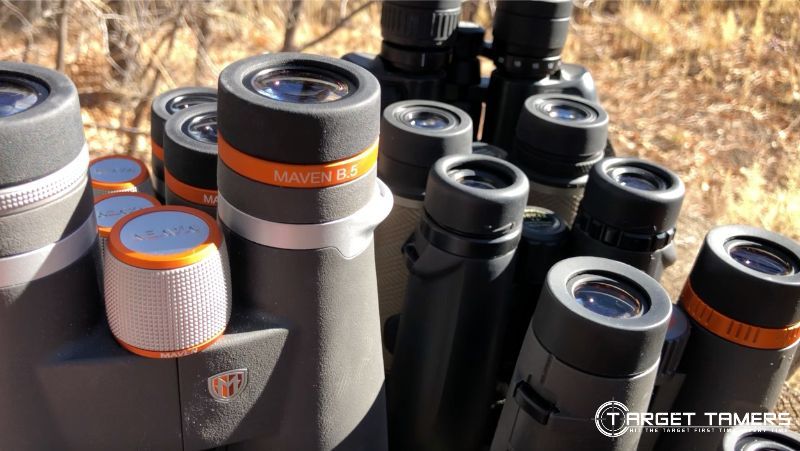
Your eyesight, pupil alignment, and individual eye strengths are not going to be the same as your hunting buddy's. Always adjust the optics if someone else has used it.
I cannot reiterate enough that you should feel free to adjust your bino during the day as often as you need to ensure you're always getting the best picture quality.
If that sounds tedious to you, buy a high-quality binocular that allows you to lock in adjustments or that don't move, shift, or adjust easily from accidental bumps, nudges, and taps.
TIP
If you want a leave-it and forget-it binocular, look for one that has individual focus or focus-free systems. Hmm, did I just raise more questions here than I did an answer? Check out our article on focusing binoculars for more details on these focus systems.
Be a Binocular Adjustment Expert
If you're looking to buy binoculars and you want to know how to make the most of them, you need to know about these four essential adjustments.
This type of binocular knowledge might very well be the difference between happily getting that lifetime bino purchase or disappointingly tossing it out or frustratingly sending it back to the seller.
Don't be an uninformed bino user - be an expert for the best visionary experience while in the hunt.
Now You Know How to MASTER These Adjustments, Learn How to FOCUS Your Binos Here
Further Reading




Hello Simon,
I have a pair of Minolta Mariner 8 x 16 x 32 binoculars and the center hinge is loose. Is there an easy fix or should I take them to a repair shop?
Thank you,
Tim
Lakewood,Co.
Hi Tim, sorry to hear you are having issues. I am not familiar with the Minolta Mariner but if there is no obvious fix, a repair shop is always the best course of action.